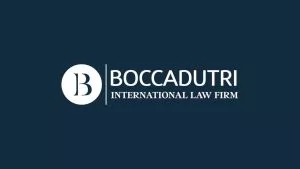- in United States
- with readers working within the Transport industries
- within Real Estate and Construction, Litigation, Mediation & Arbitration and Criminal Law topic(s)
Contents
- Transparency Requirements Overview
- Mandatory Crypto-Asset White Paper
- Public Communication and Disclosure Requirements
- Regulatory Oversight
- Consequences of Non-Compliance
- Practical Implementation Guidelines
The Markets in Crypto-Assets (MiCA) Regulation stand as one of the most significant regulatory frameworks for the crypto-asset sector in the European Union, establishing rigorous standards for transparency and disclosure.
The implementation of this Regulation is crucial for ensuring that Italy's crypto-asset industry operates within a clear and uniform regulatory framework across Europe, fostering sustainable growth in this emerging market.
Transparency Requirements Overview
Under MiCA, all entities that issue or provide crypto-asset services must maintain high transparency standards.
Information provided to investors and the public must be:
- Clear: easily comprehensible for individuals without technical expertise
- Accurate: founded on verified and current data
- Not misleading: all statements must be truthful and cannot mislead users or investors in any way
These requirements are designed to maintain market confidence in crypto-assets while protecting investors and preventing deceptive practices.
Mandatory Crypto-Asset White Paper
One of MiCA's core requirements is that crypto-asset issuers must prepare a white paper detailing the characteristics of their offered product.
The white paper must contain:
- Issuer information: identity, registered office, and corporate structure
- Crypto-asset overview: functionality, intended use, and associated risks
- Offering details: asset quantity, pricing, and distribution methods
- Project risk assessment: covering both technological and market risks
Issuers must make thewhite paper publicly accessible before launching any crypto-asset offering. Additionally, they must submit it to the relevant authorities for preliminary review.
Public Communication and Disclosure Requirements
All public communications, whether through the white paper, websites, social media, or advertising, must adhere to strict transparency standards:
- Consistency: all published information must align with the white paper content
- Advertising clarity: promotional materials must be clearly marked as advertisements and present risks and returns accurately
- Prompt disclosure: significant changes must be immediately communicated to investors and the public
Regulatory bodies, including national competent authorities (such as Consob and Banca d'Italia in Italy), actively monitor these communications to ensure regulatory compliance.
Regulatory Oversight
Competent authorities are essential in enforcing MiCA regulations through:
- White paper assessment: verifying document completeness and legal compliance
- Communication oversight: ensuring messages are complete and not misleading
- Compliance monitoring: conducting inspections and audits of company operations
These authorities have the power to request additional information or suspend offerings that fail to meet regulatory standards.
Consequences of Non-Compliance
Companies failing to meet MiCA's transparency and disclosure requirements face:
- Administrative penalties: substantial fines scaled to violation severity
- Legal exposure: potential investor litigation
- Reputation risk: loss of market and investor confidence
Practical Implementation Guidelines
Companies must adopt a proactive compliance strategy by:
- Developing a comprehensive white paper with input from legal and technical experts
- Implementing communication controls to ensure accuracy and consistency
- Providing staff training on regulatory requirements and compliance risks
- Engaging legal counsel to review corporate documentation and procedures
The European Union's adoption of MiCA demonstrates its recognition of the crypto-asset sector's significance while sending a positive signal to potential investors.
These rigorous transparency and disclosure requirements provide essential safeguards for investors who choose regulated European companies for their investments.
For businesses, regulatory compliance extends beyond legal obligations, offering an opportunity to build market trust and credibility.
Successfully navigating this new regulatory landscape requires thorough preparation, supported by experienced legal counsel with expertise in this evolving field.
The content of this article is intended to provide a general guide to the subject matter. Specialist advice should be sought about your specific circumstances.
[View Source]

